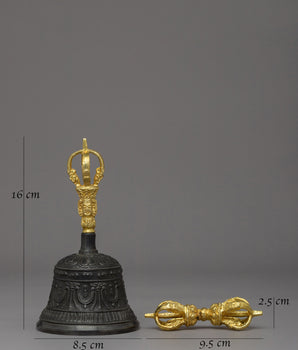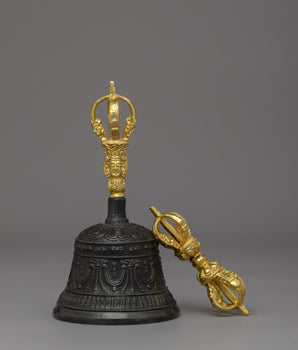The Serene Presence of Lord Vishnu in Buddhist Philosophy
Lord Vishnu, one of the principal deities of Hinduism, known as the preserver and protector of the universe, also finds a significant place in Buddhist lore
Buddhism offers a distinctive viewpoint on many individuals frequently connected with Hinduism because of its vast tapestry of stories and deities. Lord Vishnu, who is generally regarded in Hinduism as the Trimurti's preserver and protector, has an interesting place.
Key Takeaways
- Lord Vishnu is revered in Hinduism and Buddhism but has differing roles and significance.
- In Buddhism, Vishnu is sometimes seen as a protector of the Buddha and the Dharma.
- The depiction of Vishnu in Buddhist art and literature underscores the syncretic nature of South Asian religious traditions.
- Understanding Vishnu within Buddhism provides insights into the complex interplay between Asian religious traditions.
Introduction to Lord Vishnu in Buddhism
Click here to view our Lord Vishnu Statue
Although Lord Vishnu is primarily linked to Hinduism as a member of the Trimurti, including Brahma and Shiva, his existence and respect in Buddhist traditions are impossible to ignore; in Buddhism, Vishnu is frequently seen as a guardian god who upholds the teachings of the Buddha and guards the Dharma.
In contrast to his Hindu counterpart, he is viewed as the universe's preserver and takes on several incarnations to save humanity and uphold the cosmic order.
Lord Vishnu in Buddhist Scriptures
- The Sutra of Lotus
One of the most significant Mahayana Buddhist scriptures, the Lotus Sutra, describes Vishnu as a guardian who watches the Buddha's teachings. This edition emphasizes how Buddhist teachings appreciate and acknowledge Hindu deities.
- Tales of Jataka
Vishnu is mentioned in the Jataka Tales, tales of the Buddha's prior incarnations in various capacities. These stories emphasize that religious characters in South Asian religions are not exclusive and that divine functions are flexible.
Depictions of Lord Vishnu in Buddhist Art
In Buddhist art, Vishnu is often depicted similarly to his Hindu representations, with four arms holding his traditional attributes: the conch, discus, lotus, and mace. However, the context of these depictions is typically Buddhist, emphasizing his role as a protector of the Dharma.
His complex and symbolic imagery captures his persona, qualities, and the ideas he represents. Even though Vishnu is not a major Buddhist god, his imagery has impacted Buddhist symbolism and art, particularly in Nepal, Tibet, and Southeast Asia, where Buddhism and Hinduism have traditionally interacted and affected one another.
| Attribute | Symbol | Significance |
| Arms | Four Arms | Symbolizes omnipotence and omnipresence, signifying the might of Vishnu in all directions and domains |
| Conch (Shankha) | Panchajanya | It represents the battle against evil, divine truth, and the primordial voice of creation (Aum). |
| Discus (Chakra) | Sudarshana | Symbolizes the intellect, heavenly vision, the destruction of evil and ignorance, and the establishment of cosmic order. |
| Lotus (Padma) | In-Hand | It represents innocence, the coming of age, and the flowering of consciousness unaffected by the mundane world. |
| Mace (Gada) | Kaumodaki | Symbolizes the strength of the mind and body, the passage of time, and the significance of moral and ethical principles. |
| Skin Color | Blue | The sky and ocean represent the boundless expanse, signifying Vishnu's all-encompassing nature and his function as protector. |
| Mount | Garuda | Represents quickness, strength, and combat skill, emphasizing Vishnu's regal and protecting qualities. |
| Abode | Vaikuntha | Represents the holy domain beyond the physical cosmos and is a sign of moksha, or emancipation. |
| Serpent | Shesha |
Symbolizes the eternal nature of the cosmos and its cycles of creation and destruction, which are under Vishnu's control. |
Comparative Analysis: Vishnu in Hinduism vs. Buddhism
Similarities
- Protector Aspect: Vishnu is revered as a protector in Buddhism and Hinduism. In Hinduism, he uses his incarnations to preserve cosmic order and safeguard the cosmos. Though this position is less prominent and more symbolic than in Hinduism, Vishnu is occasionally seen in Buddhism—especially in areas with heavy Hindu influences—as a defender of the Buddhist faith and its adherents.
- Moral Order: Buddhism, which emphasizes moral values and ethical behavior, shares similarities with Hinduism in that Vishnu is associated with Dharma or moral order. The fundamental idea of maintaining cosmic or moral order unites the two religions, notwithstanding their divergent interpretations of Dharma.
- Compassion and Benevolence: Buddhist compassion can be compared to Vishnu's charitable attitude in Hinduism, where he takes many forms and visits Earth to aid people and restore Dharma. The Buddha's teachings strongly emphasize compassion for all living things, which is consistent with Vishnu's caring and protecting nature.
Differences
-
The Idea of God: Vishnu is the highest deity in Hinduism, a polytheistic faith with a well-defined pantheon. Buddhism is non-theistic and emphasizes each person's journey to enlightenment; it does not support the worship of gods in the same manner as Theravada Buddhism.
Even in the more prominently Buddhist schools of Mahayana and Vajrayana, deities are not so much superior beings or creators as they are symbols or means to enlightenment. -
Role & Worship: Vishnu is highly revered in Hinduism, where he is honored in temples alongside his incarnations. There is also a rich custom of ceremonies and festivals honoring his exploits. Any respect shown to Vishnu-like figures in Buddhism is primarily symbolic and focuses on the attributes they stand for rather than the deity himself.
Vishnu-like figures may be recognized as a part of a more significant spiritual legacy in various Buddhist traditions, but they do not play an essential role in religious observance. -
Avatars & Iconography: Vishnu's incarnations, such as Rama and Krishna, and his four arms, conch, discus, lotus, and mace, are among the intricate and distinct symbols associated with him in Hinduism. Buddhism does not use this imagery in its artwork or religious rituals.
Buddhist literature refers to avatars like Vishnu as past Buddhas or bodhisattvas. Still, these characters are interpreted in the framework of rebirth and enlightenment, not as supernatural interventions to bring cosmic order back.
Avatars of Lord Vishnu
| Avatar | Description |
|---|---|
| Matsya | Vishnu appeared as a fish to rescue the Vedas during a great flood. |
| Kurma | Incarnated as a tortoise to support Mount Mandara during the churning of the ocean. |
| Varaha | Took the form of a boar to rescue the earth goddess, Bhudevi, from the demon Hiranyaksha. |
| Narasimha | Manifested as a half-man, half-lion to defeat the demon king Hiranyakashipu. |
| Vamana | Appeared as a dwarf Brahmin to subdue the demon king Bali. |
| Parashurama | Incarnated as a Brahmin warrior with an axe to rid the earth of corrupt rulers. |
| Rama | Took birth as Prince Rama to defeat the demon king Ravana and uphold dharma. |
| Krishna | Incarnated as Lord Krishna to guide humanity and deliver the Bhagavad Gita. |
| Buddha | Traditions believe Vishnu incarnated as Gautama Buddha to spread compassion and enlightenment. |
| Kalki | Vishnu will appear as Kalki, a divine warrior, to end the current age and restore dharma. |
The Tale of Buddha & Vishnu
Vishnu decided to see the Enlightened One after being intrigued by the Middle Path, compassion, and non-violence taught by the Buddha. Dressed as an older man, Vishnu went up to where the Buddha was sitting in meditation beneath the Bodhi tree.
"O Enlightened One," Vishnu said at the outset.
"I have seen the world's suffering and have traveled far."
"I have witnessed the gods themselves fighting to keep the Dharma in balance. Tell me, how can harmony be restored?"
A contented smile appeared on his face when the Buddha's eyelids opened.
"O traveler, ignorance, hate, and want are the root causes of the world's misery.
The Eightfold Path, which leads to the end of suffering and the achievement of Nirvana, must be followed to bring peace back."
"O Great Buddha, if your path is true, then show me a way to protect dharma without the need for my divine interventions. Provide me with a route that even the gods can travel " challenged Vishnu, who was still hiding.
The Buddha said, "O Vishnu, guardian of the cosmos, your avatars have indeed preserved dharma through the ages," acknowledging the holy nature concealed inside the elderly man. However, the hearts of all creatures hold the ultimate defense of Dharma, not the might of the gods. Beings who live by the virtues of kindness, compassion, and knowledge inevitably sustain the Dharma. You will witness a shift in the world if you instruct your followers to pursue these attributes."
Vishnu showed his full form and bowed to the Enlightened One, moved by the Buddha's words:
"O Buddha, your knowledge illuminates the way to real peace and harmony. I will exhort my followers to adhere to your teachings, as they hold the secret to preserving Dharma."
From that moment on, Lord Vishnu and his adherents adopted the teachings of the Buddha into their practices, advocating for a society in which knowledge and compassion triumphed over might and force. As a result, Vishnu gained notoriety as the universe's defender and as a defender of the Dharma, supporting the Buddha's journey towards enlightenment.
Despite being an imaginative interpretation, this story captures the spirit of the harmonious coexistence of Buddhism and Hinduism. It emphasizes the worldwide search for harmony and truth and respecting and acknowledging shared ideals.











